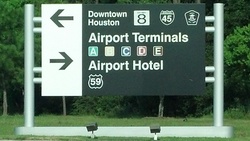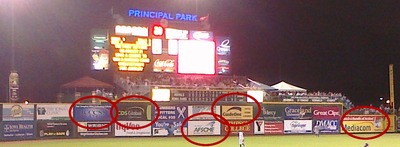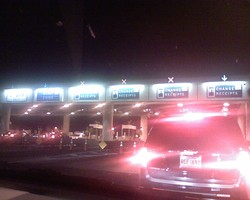
This wayfaring sign appears just outside the exit from the rental-car garage at Houston's Bush Intercontinental Airport. By definition, most of the people retrieving a rental car from an airport are people from out of town -- so it's at this kind of location that clear wayfaring signs allow drivers to quickly comprehend essential information in order to make safe decisions.
It's pretty clear from this sign that downtown Houston is to the left, and the airport hotel is to the right. But why leave the "Airport Terminals" section floating in the strange limbo? Sure, after a few moments of inspection, it appears clear enough that the terminals are to the right. But not at a split second's observation -- and that's not a good way to treat drivers who have just gotten off (often long, uncomfortable) commercial flights in a new city, and who may easily be disoriented as to which way is north (especially after emerging from a sheltered parking garage with no reference to the sun).
This sign could be fixed easily...move the right-hand arrow up. Or duplicate it (one each beside "Airport Terminals" and "Airport Hotel"). Or draw a single line between the "Downtown Houston" line and the "Airport Terminals" line. Or add some space in the same location. Or change the background color behind the locations in either the right-hand direction or the left-hand one.
But this? It simply fails the basic need for swift, unambiguous directional communication.

